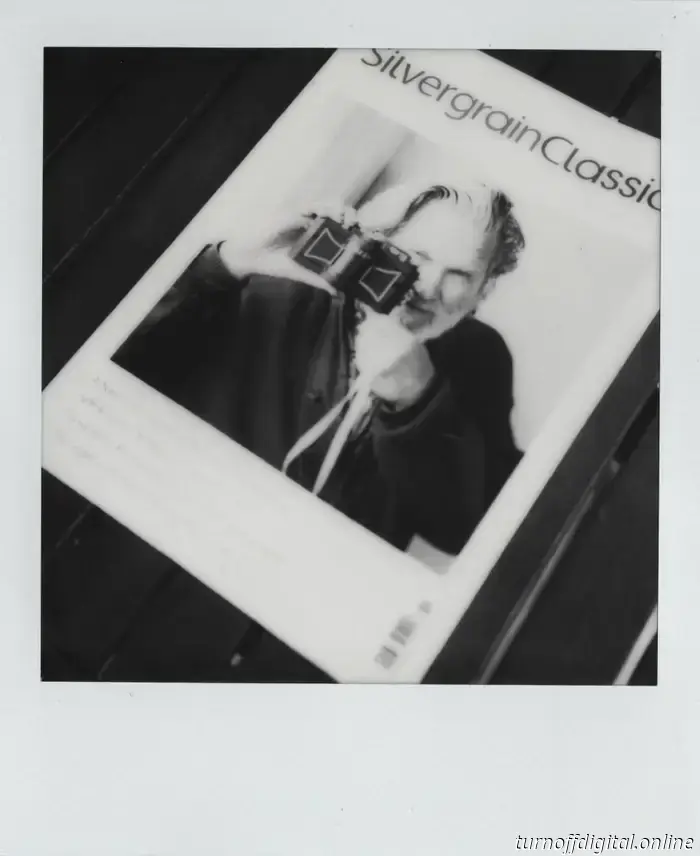
I hope your summer is going well and that you're having a great time with your films and cameras! It's been quite a busy season at Analog.Cafe HQ: I attempted to replicate CineStill 800T at home, found a straightforward method to fix the Polaroid SX-70’s film ejection issue, and compared the only two color-negative films that aren't from Kodak. I also attended the sole North American talk by Charys Schuler regarding the new Widelux cameras being developed in collaboration with Jeff Bridges. I'll share a detailed account of what I learned there with the GOLD members. 🤫 In this newsletter: Free film, replicating CineStill 800T at home, comparing non-Kodak color-negative films available today, fixing the SX-70 film ejection problem, and Widelux 2025: pricing, design, materials, and components. What's next for Analog.Cafe? Support this blog and gain premium features with GOLD memberships!
Free film. A reminder: I'm giving away three rolls of Cinema Shorts (Kodak Vision 3) film to a lucky GOLD member every month! Details.
Replicating CineStill 800T at home. In case you missed it, I, along with Daren, Yvonne, and Shawna, attempted to replicate CineStill 800T film at home by following the online guidance: washing Kodak Vision 3 500T and re-spooling it. It took all four of us several attempts to achieve what we considered surprising results and a valuable learning experience. If you’ve ever shot with CineStill films and wondered about the replication process, you should definitely check out “How to Fake CineStill 800T.”
Comparing non-Kodak color-negative films available today. Kodak produces a substantial amount of film, especially color-negative film. It is the preferred medium for many Oscar-winning projects, countless still cameras, and is available under various brands as modified (e.g., CineStill 800T) or simply re-spooled film. No one comes close to Kodak in terms of the quality and quantity of color-negative film currently being produced. Fujifilm has ceased selling all but what is thought to be rebranded Kodak film, while developing new products requires significant effort and investment. Starting completely fresh in 2025 is not even feasible—but we're making progress. Three film factories (not including Kodak) are beginning to produce color-negative film that is nearing the quality of Kodak's lower-tier options, like Kodak Gold.
Harman Phoenix II 200 versus KONO Color 200 (also known as ORWO Wolfen NC200). Can you discern which is which? Find the answer in the article linked below. ↴ Lucky is working on color-negative film based on Kodak formulas in China, but it is currently only available in a limited domestic release. InovisCoat GmbH (known as ORWO) has been producing color film using old Agfa IP on vintage machines for years. This year, they introduced a film that is reasonably fine-grained, color-accurate, and offers a commendable dynamic range at ISO 200. It is marketed as KONO Color 200, OptiColour 200, and soon ORWO NC200; I found this film surprisingly good and a significant improvement over earlier ISO-400 releases.
Lastly, there's Harman Phoenix, produced at the UK factory making Ilford film. Harman/Ilford has nearly zero experience in producing color-negative film, despite selling black-and-white emulsions for over 140 years. Phoenix II is their second major release, following the unexpected success of Phoenix 200 last year—the first color film from the brand since the 1960s. As we await the release of Lucky color film, Harman Phoenix and ORWO NC200 are currently the only two viable non-Kodak color options available. So, how do they stack up against each other? Read “Comparing Two Newest Colour Films: Phoenix vs. NC200: The Only Non-Kodak Colour-Negative Films Made Today” to discover the differences! ☝️ The article provides detailed comparisons using replicable precision with an open negative inversion methodology, normalized greyscale, reference charts, and superb modeling by Lily Li Hua.
The lubricant should be applied between the arm and the rail it slides over.
Fixing Polaroid SX-70’s film ejection problem at home. I bought my SX-70 for less than twenty dollars at a thrift shop six years ago. It’s the Model 1 with genuine leather. I’ve shot hundreds of frames with it, and it has only failed twice due to film ejection issues for different reasons. The common recommendation online is to send it for repair, which could easily cost several hundred dollars, take months, and still come with limited guarantees (as poor repairs by professional shops are quite common). I chose to ignore that advice and searched the internet for solutions. Fortunately, fixing the film
I attempted to recreate CineStill 800T in my home, discovered a fairly simple method to resolve the Polaroid SX-70's malfunctioning film eject, and compared the only two color-negative films not produced by Kodak. Additionally, I attended the sole North American presentation by Charys Schuler regarding the new Widelux cameras created in partnership with Jeff Bridges.